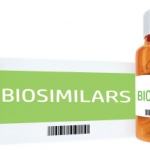Hepatitis-C virus (HCV)-associated arthritis is highlighted this month in our ongoing series on patient education materials.
Though back pain disables 5.4 million Americans and costs at least $90 billion in medical and non-medical expenses annually, the study and treatment of back pain in children and adolescents is relatively new.
On May 17, Julie Fritz, PhD, PT, ATC, will present a rheumatology audioconference entitled “Evidence-Based Care of Low Back Pain in Children and Adolescents.” She recognizes the importance of spreading what knowledge there is about this patient group. “Although there is a need for research on the etiology and management of the condition in this age group, there are things that we know that can help to guide our management,” she says.
Fritz’s research and practice as a physical therapist focus on patients who experience “non-specific” spinal pain, which is a difficult condition to assess and treat. Her approach has focused on identifying subgroups of patients in this population and “targeting these subgroups for more specific non-operative interventions,” she explains.
Fritz’s focus on children is part of what she calls the increasing recognition of the problem of low back pain in children and adolescents and its ramifications for affected individuals as they move into adulthood. “We have the potential to have a real impact on the quality of life of affected individuals if we are able to prevent or effectively manage low back pain when it occurs in younger individuals,” she says.
Because young people with low back pain are likely to become adults with low back pain, treating them is a particular and important challenge.
While her talk will cover actionable techniques and interventions for these patients, Fritz notes that the field of study is evolving so rapidly that clinicians are well advised to stay abreast of recent research in order to gather more information about treating children with low back pain.



